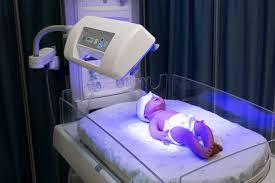Phototherapy Lamps Market Market Segmentation Analysis

The phototherapy lamps market is experiencing significant growth, driven by technological advancements and increasing demand for non-invasive treatments. According to a report by Pristine Market Insights, the market is witnessing a surge in new product launches and innovations that enhance functionality and user experience. These developments are expanding the application of phototherapy lamps beyond traditional medical settings into home healthcare and wellness industries.
Market Segmentation Overview
The phototherapy lamps market can be segmented based on various criteria, including product type, application, end-user, and region. Understanding these segments helps in identifying key growth areas and tailoring strategies to meet specific market demands.
1. Product Type
Phototherapy lamps are available in several configurations, each catering to different therapeutic needs:
-
Narrowband UVB Lamps: These lamps emit a specific wavelength of ultraviolet B light, primarily used in treating skin conditions like psoriasis and vitiligo. Their precision makes them a preferred choice in dermatology.
-
Broadband UVB Lamps: Offering a wider spectrum of UVB light, these lamps are effective for treating various skin disorders but may require more extended exposure times compared to narrowband UVB lamps.
-
PUVA Lamps: Combining ultraviolet A (UVA) light with a photosensitizing drug, PUVA therapy is utilized for severe cases of skin conditions that do not respond to other treatments.
-
Excimer Lasers: These devices emit a focused beam of ultraviolet light, allowing for targeted treatment of localized areas, minimizing exposure to surrounding healthy skin.
2. Application
The primary applications of phototherapy lamps include:
-
Skin Disorders: Conditions such as psoriasis, eczema, and vitiligo are commonly treated using phototherapy. The controlled exposure to specific wavelengths of light helps in reducing symptoms and promoting healing.
-
Neonatal Jaundice: Phototherapy is a standard treatment for jaundice in newborns, utilizing blue light to break down excess bilirubin in the infant's blood.
-
Mood Disorders: Seasonal Affective Disorder (SAD) is addressed using light therapy, where exposure to bright light helps in regulating mood and sleep patterns.
-
Wound Healing: Emerging applications include using phototherapy to accelerate the healing process of wounds and injuries by stimulating cellular repair mechanisms.
3. End-User
Phototherapy lamps are utilized across various settings:
-
Hospitals and Clinics: These institutions use phototherapy lamps for treating a wide range of conditions, from skin disorders to mood-related issues, under professional supervision.
-
Home Care: With advancements in technology, portable phototherapy devices are now available for home use, providing patients with convenient treatment options.
-
Medical Spas and Wellness Centers: These establishments offer phototherapy as part of their services, focusing on skin rejuvenation and overall wellness.
4. Regional Insights
The adoption and growth of phototherapy lamps vary across regions:
-
North America: The region leads in market share, driven by advanced healthcare infrastructure and high awareness levels among the population.
-
Europe: Countries in Europe are witnessing steady growth, with an emphasis on dermatological treatments and wellness therapies.
-
Asia-Pacific: This region is experiencing rapid growth due to increasing healthcare access, rising disposable incomes, and a growing awareness of non-invasive treatment options.
-
Latin America and Middle East & Africa: These regions are gradually adopting phototherapy treatments, with growth driven by improving healthcare facilities and increasing patient awareness.
Market Trends and Innovations
-
Technological Advancements: The integration of LED technology has revolutionized phototherapy treatments, offering energy-efficient solutions with longer lifespans and reduced heat emission.
-
Smart Devices: The development of smart phototherapy devices equipped with features like timers, adjustable light intensities, and remote monitoring capabilities is enhancing user convenience and treatment adherence.
-
Portable Solutions: Compact and portable phototherapy lamps are gaining popularity, allowing patients to receive treatments at home or on the go, thereby improving accessibility.
-
Combination Therapies: The use of phototherapy in conjunction with other treatments, such as topical medications, is becoming more prevalent, offering comprehensive care for patients.
Conclusion
The phototherapy lamps market is poised for substantial growth, driven by technological innovations and an increasing demand for non-invasive treatment options. Understanding the market's segmentation allows stakeholders to identify opportunities and tailor their strategies to meet the diverse needs of patients and healthcare providers. For more detailed insights into the phototherapy lamps market, you can refer to the comprehensive report available at Pristine Market Insights.
- Art
- Causes
- Crafts
- Dance
- Drinks
- Film
- Fitness
- Food
- Games
- Gardening
- Health
- Home
- Literature
- Music
- Networking
- Other
- Party
- Religion
- Shopping
- Sports
- Theater
- Wellness


